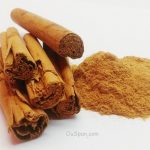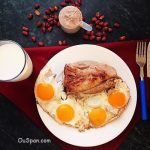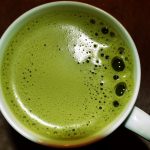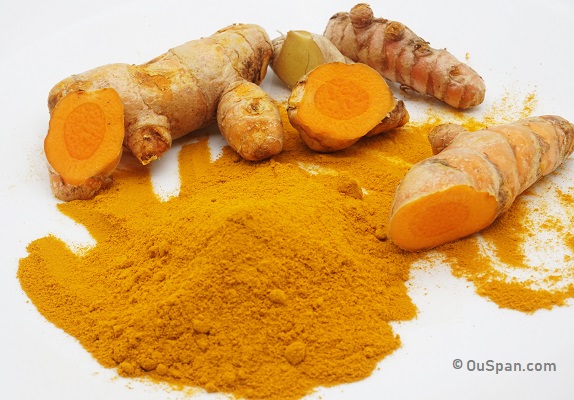
A plant with a bright orange rhizome, turmeric (Curcuma Longa) is well-known for its distinct color, punget and bitter flavor, and medicinal properties and sometimes called the Golden Spice or Indian Saffron. This spice has been used for many centuries in a traditional Indian Ayurvedic medicine.
The active compound found in turmeric is called curcumin ant it has beneficial properties, supporting antioxidant response of the body. As a result, it might be beneficial for prevention and treatment of diseases caused by oxidation and inflammation including cancer, cardiovascular disease, arthritis, depression, gastrointestinal disorders, atherosclerosis, diabetes, diabetic complications, liver diseases, and skin issues. Read more about Impressive Turmeric Health Benefits.
How to Use Turmeric?
There is no universal recommendation for turmeric consumption. Turmeric can be used in fresh or ground form as a spice to flavor your food or as a dietary supplement in tablet and capsule forms.
Fresh or ground spice is used to make turmeric tea, blend it into smoothies, sprinkle on soup, pasta, or vegetables. In Asia and North Africa, turmeric is widely used as a key ingredient of curry powder, for making soups, marinade or sauces. Also, you can rub it with salt and pepper into fish, chicken, or red meat before grilling or frying it.
One important aspect to remember that due to its low bioavailability, stand-alone curcumin is not absorbed very well, gets rapidly metabolized by the body and ends up being quickly eliminated out of the system. The absorption improves significantly in the presence of piperine which is found in black pepper. Also, due to the fact that curcumin is lipophilic or fat soluble, its absorption increases in the presence of fat or oil.
If you use turmeric for cooking and also want to improve absorption of curcumin for your health benefits, make sure to combine turmeric with black pepper or dietary lipids.
If you decide to take it as a supplement, check if a supplement contains pipeline and make sure to take it with your meals.
According to Joint United Nations and World Health Organization and European Food Safety Authority reports, the daily recommendation for dietary intake of curcumin is 3 mg per kilogram of the body weight. If you weight is 165 pounds (75 kg), you can consume 225 mg curcumin daily.
However, the studies demonstrated that high doses up to 2,000 mg per day for 2-3 months may be effective for certain conditions and in some studies the amount from 8 to 12 g per day over 3 months was well tolerated by the study participants(1).
| Turmeric as a spice
Turmeric powder contains about 3 percents of curcumin. A teaspoon (3 g) of ground turmeric contains roughly 0.09 g or 90 mg of curcumin, and one tablespoon (7 g) is about 200 mg of curcumin. One teaspoon of powder spice by amounts of curcumin is equal to approximately three teaspoons grated or two inches of fresh turmeric root.
If you simply want to diversify your nutrient intake by consuming turmeric for health benefits, use from 1/2 to 2 teaspoons of turmeric powder daily or its fresh or grated equivalent.
Unlike fresh ginger root, fresh turmeric can't be easily found in supermarkets. Occasionally, fresh or dry whole turmeric root is available in Asian foods shops, natural or whole foods stores, and online.
Turmeric can be used as a natural fabric dye. So, be careful not to spill it on your clothes and white kitchen surfaces. The stains is difficult to get rid of.
How to Use Fresh Turmeric?
- Brew turmeric tea from grated fresh turmeric
- Blend 1 inch fresh turmeric into a smoothie or milk shake
- Add orange color of grated root to rice, quinoa, or pasta when cooking
- Stir 2 spoons freshly grated turmeric into stews or soups
- Add freshly grated root in marinades for chicken, red meat, or fish.
How to Use Ground Turmeric?
- Color Easter eggs by adding ground turmeric to boiling water
- Brew a cup of turmeric tea from 1/4 tsp ground turmeric
- Make a cup of Golden Milk
- Add 1 tsp of turmeric into a smoothie or juice
- Add 1/2 tsp of ground spice to rice, quinoa, pasta, mashed potatoes, or scrambled eggs
- Stir 1/2 - 1 tsp into stews or soups
- Sprinkle on your salad, yogurt, ice-cream or latte
- Make curry powder.
| Turmeric as a supplement - Doses
Turmeric extracts with a minimum 95% of curcuminoids (400-600 mg) two or three times daily were used in extensive clinical studies on the turmeric medicinal properties.
Optimal doses of curcumin for therapeutic uses is not established yet. The following doses of turmeric extract were used in researches that have yielded promising results:
Osteoarthritis: 500 mg of turmeric extract has been used once or twice daily for 4 - 12 weeks (1).
- Meriva 500 mg + Glucosamin - 1 capsule a day for 12 weeks.
- C3®complex 500 mg three times a day for 6 weeks
- Theracurmin 180 mg 6 times a day for 8 weeks.
High Cholesterol (Reduce Total Cholesterol): 180 mg of three divided doses daily for 8 weeks (10).
Prediabetes (Delay Development Type 2 Diabetes): 1,500 mg in 6 divided doses daily for 9 months (11) .
Depression: 1,000 mg per day for 6-8 weeks (12).
Do not take turmeric supplements on an empty stomach. It can lead to gastric and peptic ulcer disease.
Turmeric extracts are considered to be safer then ground spice. Supplements are unlikely to be contaminated with additives, heavy metals, insect parts and rodent hair (4).
Always consult your health care provider before trying to treat any disease or illness with any health supplements.
How to Store Turmeric
Store turmeric in a sealed container in dry, cool, and dark place. Like most dried spices, it will start to lose its flavor after 6-8 months.
Store fresh turmeric in a resealable plastic bag in the refrigerator from one to three weeks if it is left unpeeled.
1. James W. Daily et al. Efficacy of Turmeric Extracts and Curcumin for Alleviating the Symptoms of Joint Arthritis: A Systematic Review and Meta-Analysis of Randomized Clinical Trials. NCBI. 2016
2. Matthew C. Fadus et al. Curcumin: An age-old anti-inflammatory and anti-neoplastic agent. NCBI. 2017.
3. Possible Interactions with: Turmeric. Penn State Hershey Medical Center.
4. Tang M. et al. Effect of cinnamon and turmeric on urinary oxalate excretion, plasma lipids, and plasma glucose in healthy subjects. NCBI. 2008.
5. Whitney Cowell et al. Ground Turmeric as a Source of Lead Exposure in the United States. 2017.
6. Turmeric Spice vs. Turmeric Supplements. ConsumerLab.com
7. Belcaro G. et al. Meriva®+Glucosamine versus Condroitin+Glucosamine in patients with knee osteoarthritis: an observational study. NCBI. 2014.
8. Panahi Y et al. Curcuminoid treatment for knee osteoarthritis: a randomized double-blind placebo-controlled trial. NCBI. 2014.
9. Nakagawa Y, Mukai S, Yamada S, et al. Short-term effects of highly-bioavailable curcumin for treating knee osteoarthritis: A randomized, double-blind, placebo-controlled prospective study. NCBI. 2014.
10. Yang YS et al. Lipid-lowering effects of curcumin in patients with metabolic syndrome: a randomized, double-blind, placebo-controlled trial. NCBI. 2014.
11. Somlak Chuengsamarn, MD et al. Curcumin Extract for Prevention of Type 2 Diabetes. NCBI. 2012.
12. Turmeric. Michigan Medicine University of Michigan.
Related
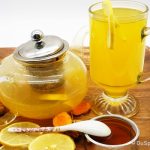 Impressive Turmeric Health Benefits
Impressive Turmeric Health Benefits
Turmeric has a number of medicinal properties which are beneficial to people trying to prevent a number of diseases...
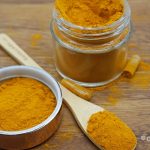 Turmeric Side Effects & Interactions with Medications
Turmeric Side Effects & Interactions with Medications
Turmeric is generally safe. If used correctly, the risks for turmeric side effects appear to be minimal...
 Cooking with Turmeric – Turmeric Beverages
Cooking with Turmeric – Turmeric Beverages
Fresh or ground spice can be used to make turmeric beverages including turmeric water, tea, smoothies, shakes...
 Cooking with Turmeric – Natural Food Coloring
Cooking with Turmeric – Natural Food Coloring
Turmeric can be used to dye any fabric, but here we will talk about natural food coloring that can be fun for kids and adults...
 Shopping for Turmeric – Best Turmeric Supplements & Powder
Shopping for Turmeric – Best Turmeric Supplements & Powder
When you shopping for turmeric supplements, there are a few things to consider...
